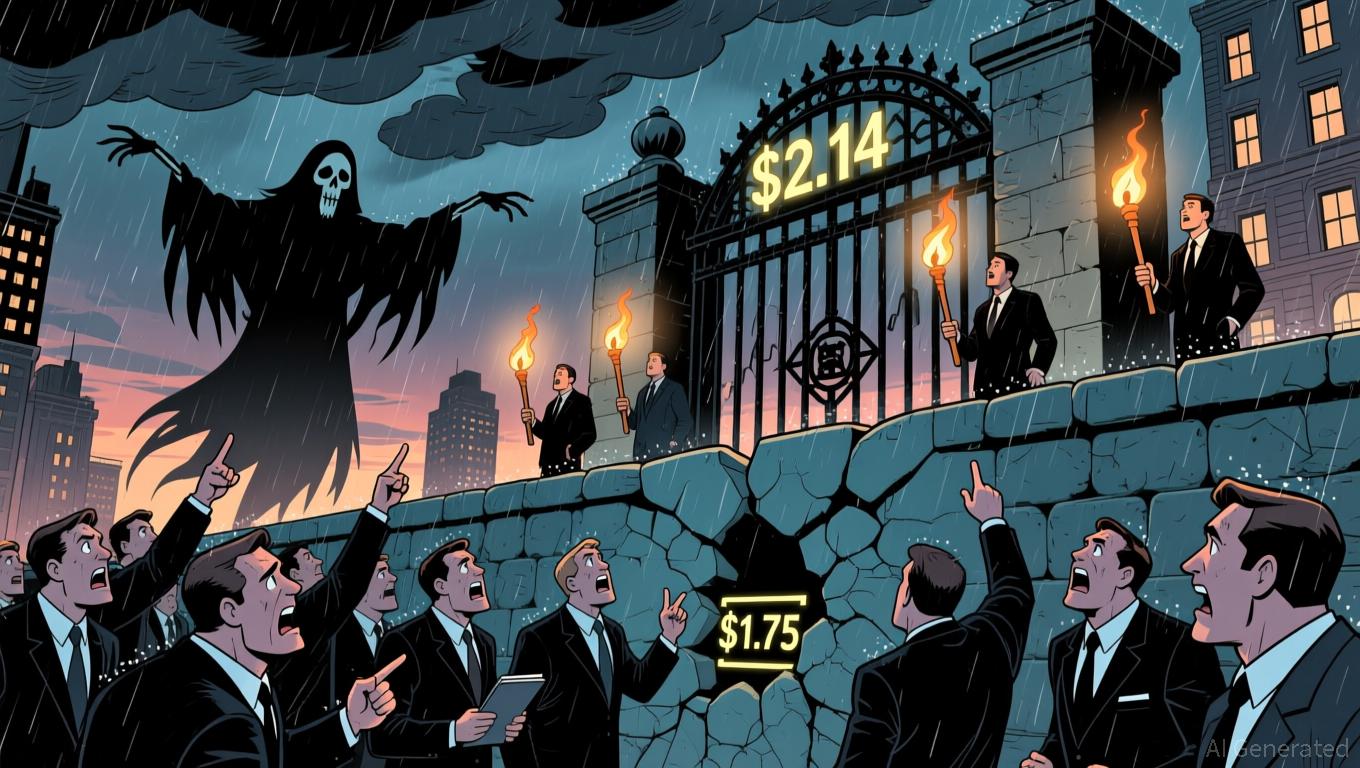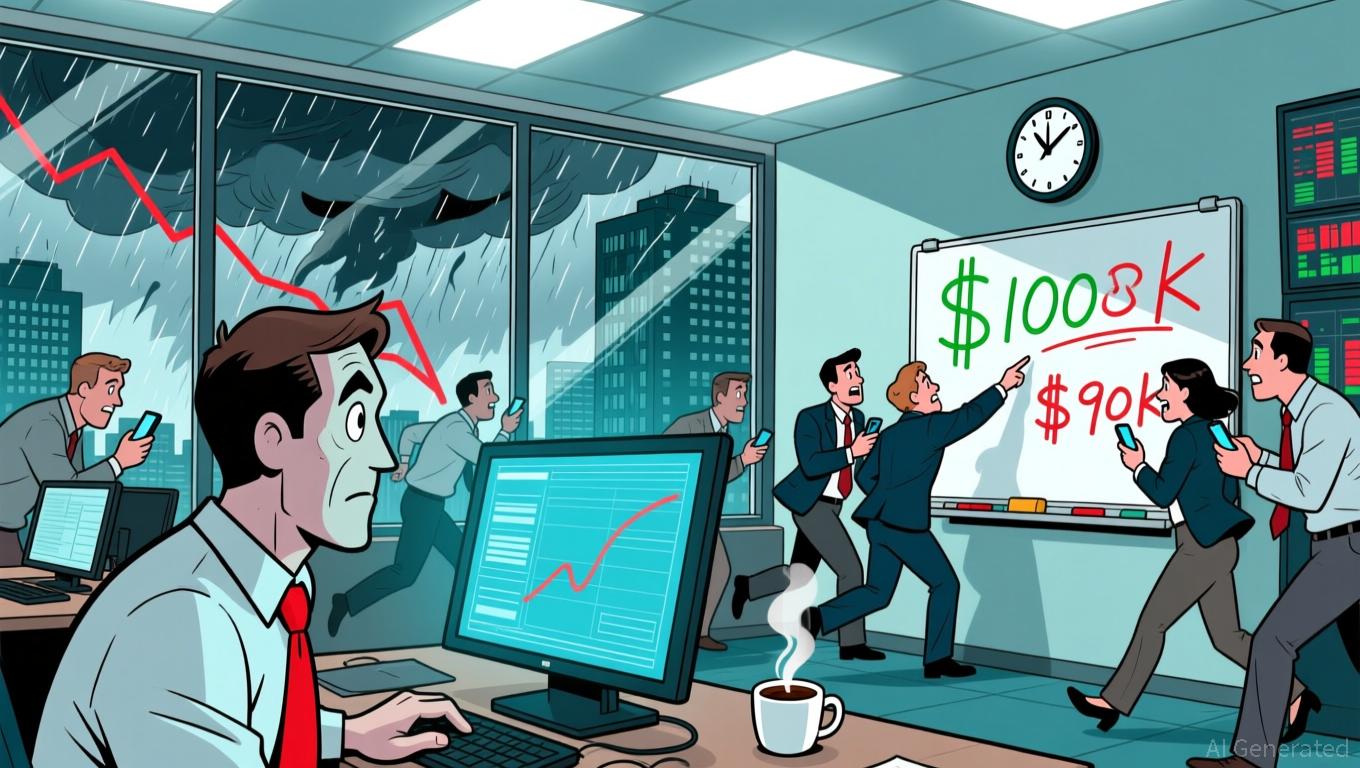Fed's Interest Rate Divide and NVIDIA's Results Challenge the Boundaries of AI Enthusiasm
- U.S. Fed minutes and NVIDIA's Q3 earnings will test AI optimism amid policy uncertainty and governance scrutiny. - Fed's October rate cut debate reveals internal divisions, while ethics probes into Kugler's trades raise transparency concerns. - NVIDIA faces $54.9B revenue test for AI chips, with market valuations hinging on its ability to sustain growth amid short-seller bets. - Strong NVIDIA results could reinforce AI sector momentum, while weak performance risks dampening tech stock enthusiasm.
This week, all eyes are on the U.S. Federal Reserve and
Recent turmoil at the Fed has heightened the importance of these minutes.
The direction of Fed policy remains unclear. At the October meeting, the committee approved a 25-basis-point rate cut, but opinions were divided: Miran pushed for a 50-basis-point reduction, while Kansas City Fed President Jeff Schmid opposed any cut

NVIDIA, now the world’s most valuable company, is also at a crucial point. The chipmaker’s third-quarter results, expected Wednesday, will gauge the strength of ongoing investment in AI infrastructure.
At the same time, the implications reach beyond NVIDIA itself. The company’s performance could either support or undermine the lofty valuations across the AI sector, which have soared on speculative enthusiasm.
This week’s economic agenda also includes important releases such as the September employment report and housing starts, but the main focus remains on the Fed and NVIDIA. With markets balancing policy uncertainty and AI momentum, volatility is likely to stay high.
Disclaimer: The content of this article solely reflects the author's opinion and does not represent the platform in any capacity. This article is not intended to serve as a reference for making investment decisions.
You may also like
XRP News Update: XRP ETF Buzz vs. Death Cross: Can the $1.75 Support Level Remain Intact?
- XRP faces critical junctures near $2.14 as Grayscale's spot ETF (GXRP) launch looms, with $1.75 support level pivotal for short-term stability. - A death cross pattern raises bearish concerns, suggesting potential 55% price drop to $1 if technical indicators fail to hold. - Institutional crypto products like Leverage Shares' 3x ETFs and 1inch's liquidity pools highlight growing institutional interest amid market volatility. - DeFi struggles with $12B idle capital while projects like Mutuum Finance aim to

Bitcoin Updates: Negative Derivatives Meet Optimistic Institutions as Bitcoin's Future Remains Uncertain
- Bitcoin fell below $85,500 amid bearish derivatives positioning, macroeconomic uncertainty, and dormant wallet sell pressure, with puts dominating calls at $85,000 strike price. - Institutional bulls like Michael Saylor's Strategy reported $2.8B Q3 profits from BTC holdings and pledged continued accumulation during the slump. - The Bitcoin for America Act proposes tax payments in BTC without capital gains liability, aiming to create a Strategic Bitcoin Reserve and modernize U.S. finance. - Derivatives pl

Bitcoin Experiences Sharp Decline as Macroeconomic Conditions Change: The Impact of Increasing Interest Rates and Heightened Regulatory Oversight on Cryptocurrency Values
- Bitcoin's 2025 late-year drop from $126,000 to $80,000 reflects heightened sensitivity to Fed policy shifts and regulatory pressures. - Fed officials like Susan Collins signaled "mildly restrictive" policy, crushing rate cut expectations and triggering 70% decline in December cut odds. - Regulatory crackdowns on crypto mixing and mining contrasted with institutional buying (e.g., Cardone Capital's $15. 3M Bitcoin purchase) amid market volatility. - Political uncertainty (60% expect Trump-era crypto gains
Bitcoin’s Abrupt Price Swings and Institutional Outflows: An In-Depth Analysis of Market Dynamics and Liquidity Challenges
- Institutional investors are shifting capital from Bitcoin to AI infrastructure, driven by higher returns in 2025. - Bitcoin's liquidity has declined, with order book depth dropping to $14M by mid-2025, exacerbating volatility. - Structural shifts, including mining repurposing and AI-focused capital flows, threaten Bitcoin's hash rate and market stability. - Alternative projects like XRP Tundra and AI-driven risks challenge Bitcoin's dominance, complicating investor strategies.